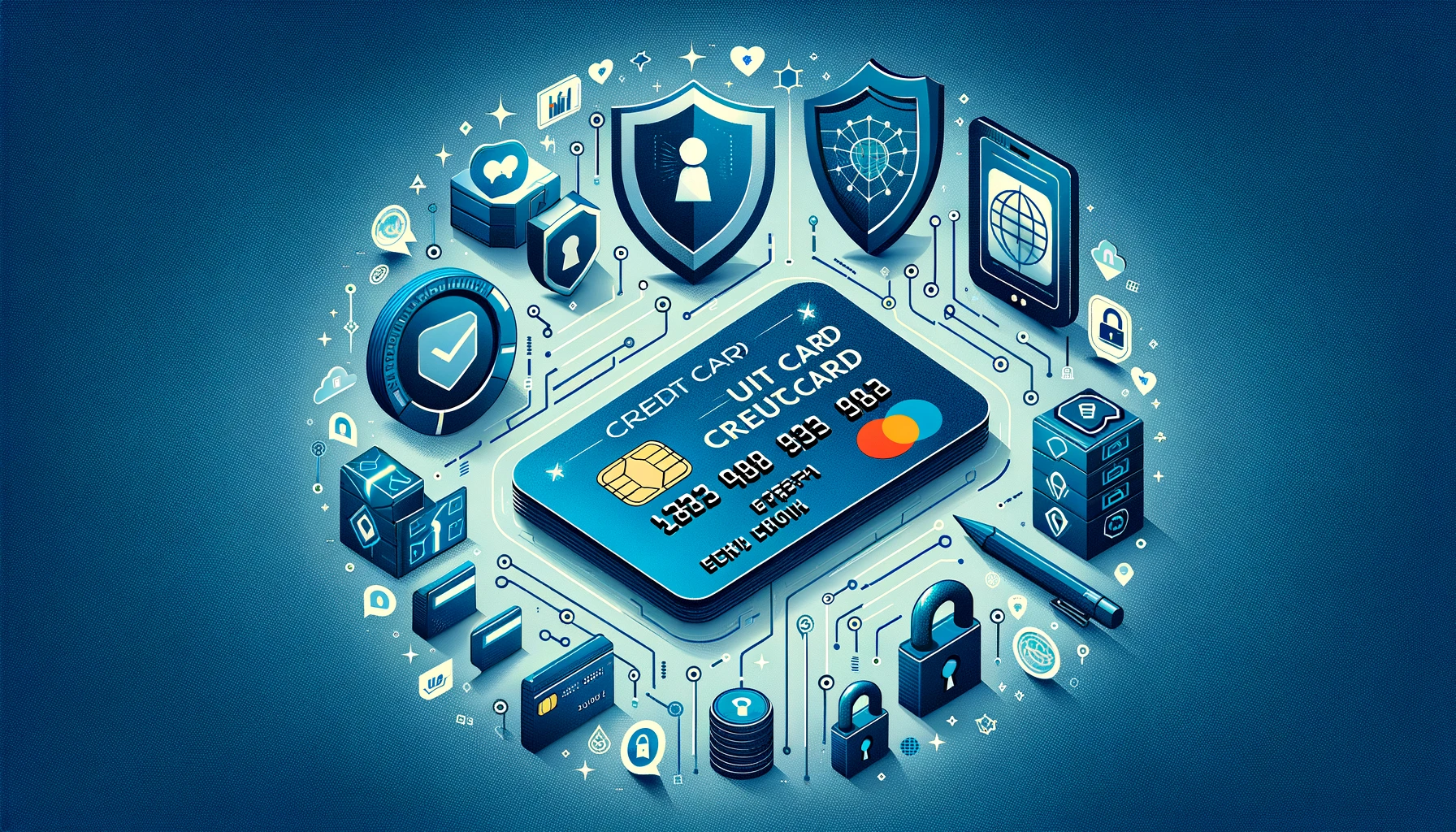Credit card pending transactions can be confusing to navigate, especially when it comes to understanding the duration and resolution process. In this article, we will delve into various aspects of credit card transactions, from managing unavailable balances to requesting credit card changes. Let’s explore the intricacies of pending transactions and how to effectively address them for a smoother financial experience.
Key Takeaways
- Contact Amazon for resolution of Unavailable Balances promptly.
- Consider the impact on credit history before closing credit cards.
- Request credit card changes wisely to manage debt effectively.
- Understand the timeframe for cancelling a credit card application to avoid negative effects on credit score.
- Lower credit limits if needed to maintain healthy spending habits and improve credit utilization.
Understanding Amazon Unavailable Balances
Causes of Unavailable Balances
Amazon Unavailable Balances arise when funds are temporarily inaccessible, often due to customer-related transactions. One primary cause is customer refunds or returns, where Amazon holds the refund amount from your available balance until the return process concludes. Similarly, chargebacks from credit card disputes result in funds being marked as unavailable while the issue is resolved.
Another factor contributing to unavailable balances is the Order Defect Rate (ODR). If a seller’s ODR exceeds 1%, Amazon may retain funds to cover potential customer refunds or claims. High rates of returns or A-to-z Guarantee claims can also prompt Amazon to withhold payments.
To effectively manage these balances, it’s crucial to maintain accurate account information and understand Amazon’s policies. Regularly reviewing your account balance and contacting Amazon Seller Support for discrepancies can help in mitigating cash flow issues.
Managing Unavailable Balances
When dealing with Amazon Unavailable Balances, it’s crucial to take proactive steps to minimize their impact on your business operations. Regularly reviewing your account can help you stay on top of any changes and address issues promptly. Here are some practical steps to manage unavailable balances effectively:
- Review your transactions: Keep a close eye on your transaction history to identify the reasons behind any unavailable balances.
- Update account information: Ensure that all your payment and shipping information is current to prevent unnecessary holds.
- Stay informed: Familiarize yourself with Amazon’s policies and guidelines to avoid policy violations that could result in unavailable balances.
- Engage with Amazon Support: If discrepancies arise, don’t hesitate to reach out to Amazon Seller Support for clarification or assistance.
Unavailable balances can significantly affect your cash flow and business decisions. It’s essential to address them swiftly to maintain financial stability and growth opportunities.
By implementing these measures, you can better anticipate and manage unavailable balances, keeping your business on a steady course. Remember, the key to managing these balances lies in understanding their causes and taking corrective action before they escalate into larger financial issues. Online forums provide valuable resources and community support for credit card users seeking advice on credit repair, debt management, and financial recovery.
Resolving Disputes with Unavailable Balances
When faced with an unavailable balance due to disputes on Amazon, it’s essential to act promptly to resolve the issue. The resolution process involves several steps that require your attention and cooperation.
Firstly, review the reason for the unavailable balance. It could be due to a customer’s refund request, a chargeback, or an investigation into potential policy violations. Understanding the cause is crucial for an effective resolution.
Next, follow these steps to address the dispute:
- Contact Amazon Seller Support: Reach out for clarification or if you suspect an error.
- Provide necessary documentation: Submit any requested invoices, receipts, or proof of purchase.
- Wait for Amazon’s investigation: The resolution might take time, so patience is key.
- Implement preventive measures: Keep your account details current and adhere to Amazon’s policies to minimize future disputes.
Managing credit card receipts is crucial for financial organization. Keep receipts for returnable items until the return period ends. Reconcile regularly for accuracy and financial clarity.
Finally, to prevent future occurrences, ensure that your product descriptions are accurate, orders are shipped promptly, and customer inquiries are addressed swiftly. These actions can help reduce the likelihood of returns and claims, thereby maintaining a healthier cash flow.
Credit Card Application Cancellation
Cancellation Timeframe
Once you’ve submitted a credit card application, the window to cancel is typically very narrow. Credit card applications are often processed rapidly, sometimes within minutes, which means you must act quickly if you wish to retract your application. To cancel, you should immediately contact the issuer’s customer service via phone or email.
If your application is still pending or under review, you have the best chance to cancel. However, if the application has already been approved or denied, it’s too late to cancel.
Here are the steps to follow if you decide to cancel your application:
- Check the status of your application through the online account or app.
- If the status is pending or under review, contact customer support promptly.
- Request the cancellation of your application.
Remember, if you’ve applied via mail, you might have additional time to cancel as the paper application is processed through the postal system.
Options After Approval
Once you’ve been approved for a credit card, you’re not obligated to use or keep it. You can close the card if it’s in your best interest, but consider the potential impact on your credit score and history. If you’re contemplating cancellation, here are your options:
- Activate the card and use it responsibly to take advantage of its benefits and potentially improve your credit score.
- Keep the card without using it to maintain your available credit, which can positively affect your credit utilization ratio.
- Request a credit card swap to a more suitable card by contacting your issuer’s customer service.
If you decide to cancel, be aware that it could lead to a temporary decrease in your credit score. It’s advisable to wait for a period of three to six months before applying for a new card to enhance your chances of approval. Additionally, ensure any outstanding balance is paid off before closing the card.
Remember, the decision to keep, use, or cancel a newly approved credit card should be based on your financial goals and the card’s alignment with them.
Impact on Credit Score
Canceling a credit card soon after approval can have negative effects on your credit score. This is primarily due to the change in your credit utilization ratio, which accounts for about 30% of your FICO score. The ratio compares your available credit to your current debts, and reducing your available credit by closing a card can increase this ratio and potentially lower your score.
When considering canceling a card, it’s important to be aware of the upfront fees, such as an annual fee, that you may still be responsible for even if the card is never used.
If you’re contemplating canceling a card to apply for another with more attractive features like a 0% intro APR or cell phone protection, remember that this could affect your chances of approval. Experts recommend waiting three to six months between credit card applications to minimize the impact on your credit history.
Closing Credit Cards: Considerations
Effect on Credit History
Closing a credit card can have a significant impact on the age of your credit history, which constitutes 15% of your FICO credit score. A short-lived account may negatively influence this factor, suggesting to lenders a pattern of risk. This is particularly true if the closure follows soon after the card’s opening, a behavior known as credit churning.
When you close a credit card, especially one that hasn’t been open for long, you not only shorten the average age of your accounts but also potentially harm your future creditworthiness.
Additionally, canceling a card reduces your total available credit, which can adversely affect your credit utilization ratio. This ratio accounts for 30% of your credit score, and a higher utilization can lead to a lower score. Before closing a card, ensure all dues, such as annual fees and accrued interest, are settled to avoid complications.
Annual Fees and Account Closure
When you decide to close a credit card, especially one that you’ve recently opened, it’s crucial to settle any outstanding annual fees. These fees often appear as immediate charges on your new account, and you’re obligated to pay them, along with any accumulated interest, before the account can be closed. Closing a credit card can also have implications for your credit history, as it may affect the average age of your accounts, which is a factor in your credit score.
Before proceeding with account closure, consider the following steps:
- Verify any upfront fees and the annual fee charged to your account.
- Pay off the annual fee and any interest accrued to avoid carrying a balance post-closure.
- Contact the credit card issuer to initiate the closure process.
- Obtain a confirmation letter from the issuer stating that your account has been closed.
- Check your credit reports to ensure the account is marked as closed.
- Destroy the physical card to prevent unauthorized use or fraud.
It’s advisable to wait a period of three to six months before applying for a new credit card after closing an old one. This waiting period can demonstrate to potential lenders that you are not a high-risk borrower.
Credit Utilization and Limits
Understanding how credit utilization affects your credit score is crucial when managing or closing credit card accounts. Maintaining a credit utilization ratio under 30% is recommended to avoid negative impacts on your credit score. If you’re looking to manage your spending more effectively, consider requesting a reduction in your credit limit. This can act as a self-imposed spending cap, potentially preventing the accumulation of unmanageable debt.
When contemplating a credit card swap, it’s important to assess the impact on your credit utilization. Swapping to a card with a lower credit limit could inadvertently increase your utilization ratio, even if your spending remains unchanged. Conversely, a card with a higher limit might offer more flexibility but also tempt increased spending.
Proactively managing your credit card accounts by adjusting limits and swapping cards can lead to a healthier financial profile, as long as these changes align with your personal financial strategy.
Requesting Credit Card Changes
Swapping Credit Cards
When you find that your current credit card no longer aligns with your spending habits or financial goals, swapping credit cards can be a strategic move. Swapping to a different card offered by the same issuer can often be done without triggering a new credit check, especially if you’re not moving to a card with higher credit requirements. This process is typically straightforward:
- Contact the issuer’s customer service line.
- Request to switch to a card that better suits your needs, such as from a travel rewards card to a cash back card.
- Confirm that the swap won’t incur any additional fees or credit checks, unless you’re opting for a more premium card.
Swapping cards can help you avoid annual fees or shift to a rewards program that’s more beneficial for your spending patterns. It’s a practical option for managing your credit without applying for a new card.
Remember, while swapping cards is convenient, it’s important to consider the terms of the new card to ensure it’s a better fit for your financial situation. Always review the rewards, interest rates, and potential impact on your credit score before making a decision.
Lowering Credit Limits
Requesting a reduction in your credit card’s limit can be a strategic move to manage spending and maintain a healthy credit utilization ratio. Lowering your credit limit may help in curbing excessive spending and keeping your finances in check. It’s important to consider the implications on your credit score, as a lower limit could potentially increase your credit utilization percentage if your balances remain unchanged.
When contemplating a credit limit decrease, ensure that it aligns with your financial goals and does not hinder your creditworthiness.
Here are some steps to take when lowering your credit limit:
- Contact your credit card issuer’s customer service to request a lower credit limit.
- Discuss your financial situation and the reasons for the decrease.
- Confirm any changes to your account terms that may result from the new limit.
- Monitor your credit score following the adjustment to understand the impact.
Managing Credit Card Debt
Effectively managing credit card debt is crucial for maintaining financial health and a good credit score. Prioritize paying off high-interest cards first to reduce the total interest paid over time. Consider transferring balances to a card with a lower interest rate, but be mindful of balance transfer fees.
- Create a budget to track spending and identify areas to cut back.
- Aim to pay more than the minimum payment each month to reduce debt faster.
- Contact your credit card issuer to negotiate lower interest rates or payment plans.
Consistently monitoring and adjusting your approach to credit card debt can lead to significant savings and a healthier financial future. Remember, small changes can have a big impact over time.
Conclusion
In conclusion, deciphering credit card pending transactions requires patience and understanding of the process. From dealing with unavailable balances on Amazon to managing credit card applications and closures, it is important to be informed and proactive. Contacting customer support, providing necessary documentation, and waiting for resolutions are key steps in resolving pending transactions. Additionally, being mindful of the impact on credit scores and financial health when closing credit cards is crucial. By following these guidelines, individuals can navigate through pending transactions effectively and make informed decisions regarding their credit cards.
Frequently Asked Questions
What are Amazon Unavailable Balances and why do they occur?
Amazon Unavailable Balances represent funds that are temporarily unavailable for withdrawal due to reasons such as returns, chargebacks, or disputes. They occur to cover potential refunds or chargebacks and are held for a certain period of time.
How can I resolve an Amazon Unavailable Balance?
To resolve an Amazon Unavailable Balance, contact Amazon Seller Support if you believe it is an error. Provide requested documentation promptly and wait for Amazon to investigate and provide a resolution. To prevent future Unavailable Balances, ensure your account information is up-to-date.
What is the impact of closing a credit card on my credit history?
Closing a credit card can affect the length of your credit history, which makes up 15% of your credit score. It may signal risk to future lenders and skew the calculation for this aspect of your score.
How can I cancel a credit card application?
You can cancel a credit card application by calling or emailing the credit card company’s customer service department within a limited timeframe. If you miss the window to cancel, you can keep and use the card or request a credit card swap.
What are the considerations when requesting credit card changes?
When requesting credit card changes, consider the impact on your credit utilization and limits. Lowering credit limits can help curb spending, while swapping credit cards can be beneficial if the new card has an annual fee.
How does a credit card application cancellation affect my credit score?
Canceling a credit card application may result in a hard credit check and a slight decrease in your credit score. It’s important to apply for cards you truly want to avoid unnecessary credit inquiries.



